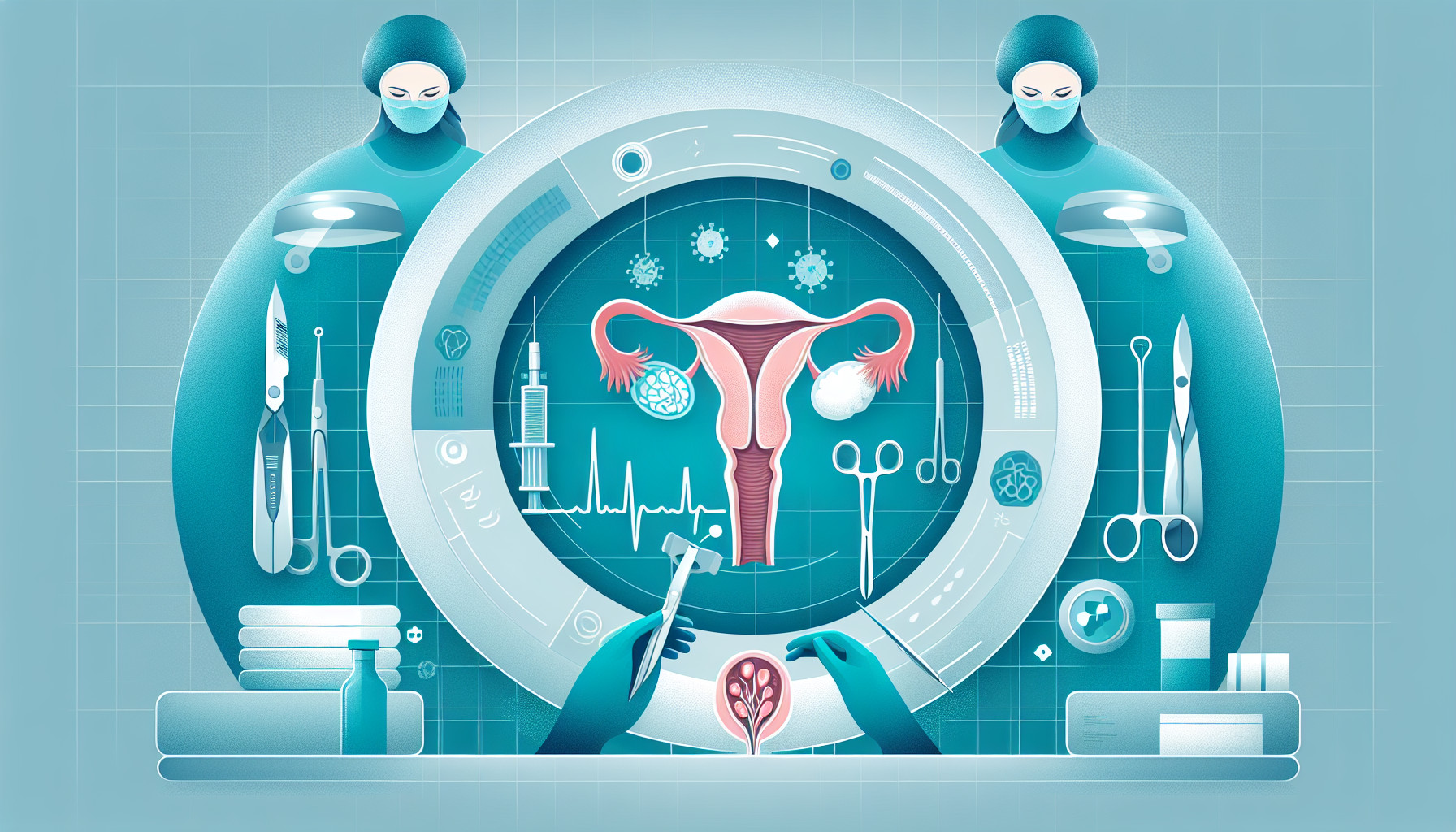Our Summary
This research paper discusses a very rare case of extremely large ovarian cysts found in an older woman after menopause. These cysts, known as serous cyst adenomas, make up about 40% of all ovarian tumors and are usually found in middle-aged women. The woman in this case was 67 years old and had two very large cysts that filled up most of her lower stomach and pelvic area. She came to the emergency department with stomach pain and the cysts were found through ultrasound and CT scans. The doctors removed the cysts by taking out her ovaries and uterus. The tests showed that both of the large cysts were serous cyst adenomas. The woman recovered well and was able to leave the hospital. This case is unique because it involves the largest known ovarian cysts in the oldest woman ever reported.
FAQs
- What are serous cyst adenomas and how common are they in ovarian tumors?
- How were the ovarian cysts detected in this case and how were they removed?
- Why is this case of ovarian cyst removal considered unique?
Doctor’s Tip
One helpful tip a doctor might tell a patient about ovarian cyst removal is to follow post-operative care instructions carefully, including taking prescribed pain medication, avoiding heavy lifting, and watching for signs of infection such as fever or increased pain. It is also important to attend follow-up appointments with your doctor to monitor recovery and ensure that the cyst does not return. Additionally, maintaining a healthy lifestyle with regular exercise and a balanced diet can help prevent future cysts from forming.
Suitable For
Patients who are typically recommended ovarian cyst removal include:
Patients with large cysts: Large ovarian cysts, especially those that are causing symptoms such as abdominal pain, bloating, or pressure, are generally recommended for removal.
Patients with persistent or recurring cysts: If a patient has had multiple ovarian cysts that continue to grow or come back after being treated, removal may be recommended to prevent further complications.
Patients with complex cysts: Complex ovarian cysts, which may contain solid areas or have irregular shapes, are more likely to be cancerous or pose a higher risk of complications. In these cases, removal may be recommended for further evaluation.
Patients with symptoms: Ovarian cysts that cause symptoms such as pelvic pain, difficulty urinating, or abnormal bleeding may be recommended for removal to alleviate these symptoms.
Postmenopausal women: Postmenopausal women, like the patient in the case study, are at a higher risk for ovarian cancer and may be recommended for removal of ovarian cysts to rule out malignancy.
Patients with family history of ovarian cancer: Patients with a family history of ovarian cancer or genetic mutations that increase the risk of ovarian cancer may be recommended for removal of ovarian cysts as a preventative measure.
It is important for patients to consult with their healthcare provider to determine the best course of treatment for their specific situation.
Timeline
Before ovarian cyst removal:
- Patient experiences symptoms such as abdominal pain, bloating, and discomfort.
- Patient undergoes diagnostic tests such as ultrasound and CT scans to identify the cysts.
- Doctors confirm the presence of ovarian cysts and discuss treatment options with the patient.
- Patient may undergo pre-operative preparation and evaluation to ensure they are fit for surgery.
After ovarian cyst removal:
- Patient undergoes surgery to remove the ovarian cysts, which may involve removing the ovaries and/or uterus.
- Post-operative recovery period, which may involve pain management, monitoring for complications, and follow-up appointments with the doctor.
- Pathology report confirms the type of cyst removed and provides information on whether it was benign or malignant.
- Patient may experience relief from symptoms such as abdominal pain and bloating after the cyst removal.
- Patient may require hormone replacement therapy if the ovaries were removed.
- Long-term follow-up to monitor for any recurrence of ovarian cysts or complications related to the surgery.
What to Ask Your Doctor
What are the risks and benefits of removing the ovarian cysts?
What type of surgery will be performed to remove the cysts (laparoscopic, open surgery, etc.)?
What is the recovery time after the surgery?
Will removing the cysts affect my fertility or hormone levels?
Are there any potential complications or side effects of the surgery?
Will I need any follow-up appointments or tests after the surgery?
What is the likelihood of the cysts coming back in the future?
Are there any lifestyle changes or precautions I should take after the surgery to prevent future cysts?
Are there any alternative treatments or options for managing the cysts?
What is the long-term outlook for my health after the cysts are removed?
Reference
Authors: Novakov I, Timonov P, Fasova A. Journal: Cureus. 2023 Nov 17;15(11):e48935. doi: 10.7759/cureus.48935. eCollection 2023 Nov. PMID: 38106758
